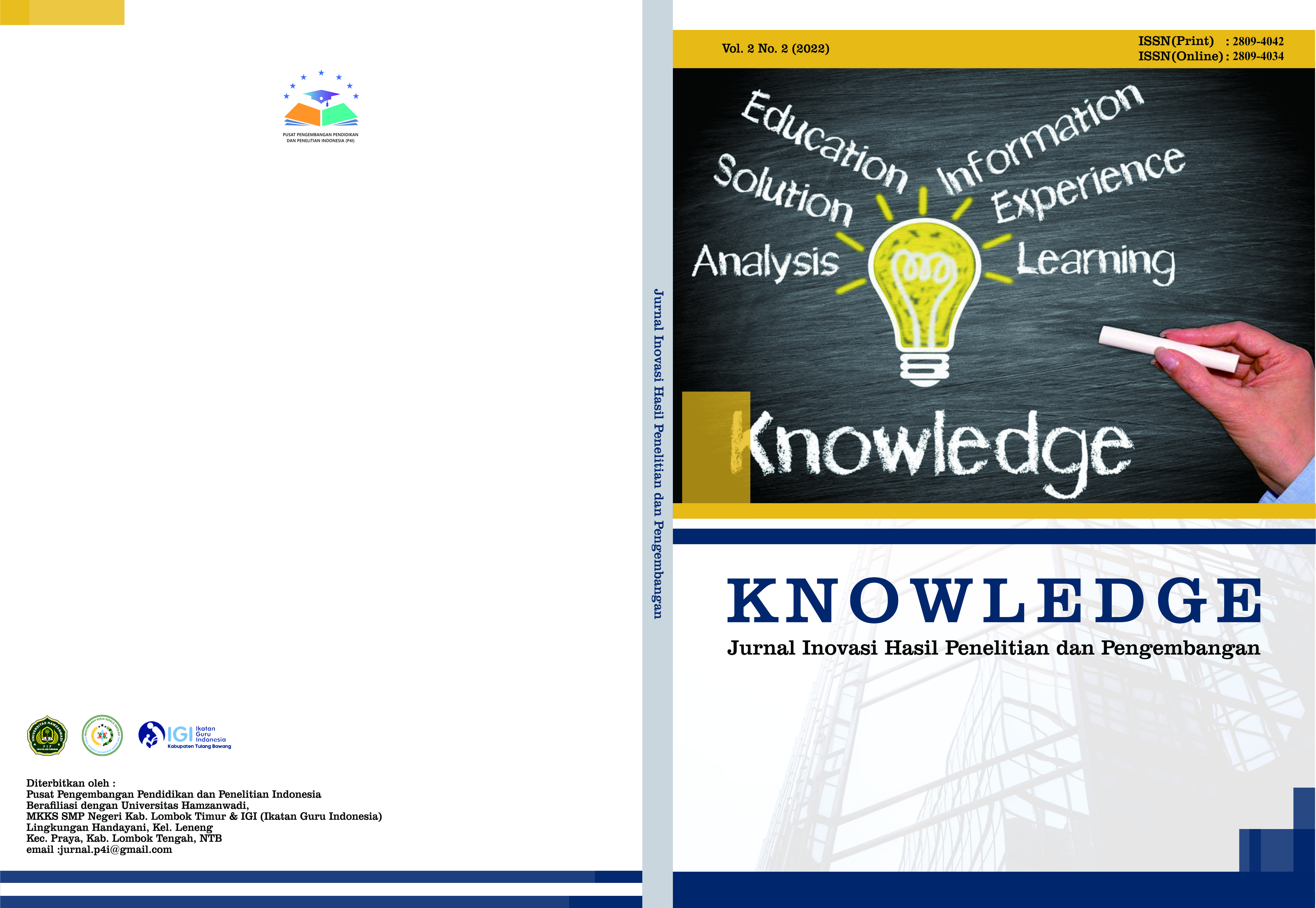PERMODELAN MATEMATIKA TRANSMISI KO-INFEKSI TUBERKULOSIS PADA KOMUNITAS HIV
DOI:
https://doi.org/10.51878/knowledge.v2i2.1409Keywords:
Ko-infeksi TB pada komunitas HIV, Permodelan Matematika, Next Generation Matrix, Basic reproductive ratioAbstract
Tuberculosis (TB) and Human Immunode_ciency Virus/Acquired Immuno-deciency Syndrome (HIV/AIDS) are major burden of infectious diseases in developing countries. TB and HIV infection have the effect of deeply on assault the immune system, since they can afford to weaken host immune respone through a mechanism that has not been fully understood. HIV coinfection is the most powerful known risk factor for progression of microbacterium tuberculosis infection to active disease, as well as TB has been reported to exacerbate HIV infection. The number of people dying from HIV-associated to TB has been falling since 2003. However, there were still 320,000 deaths from HIV-associated to TB in 2012. In this thesis proposed to create a model of transmission co-infection TB in HIV community, dynamic system with ten compartments built in here. Dynamic analysis in this paper mentioned ranging from disease free equilibrium conditions, endemic equilibrium conditions, basic reproduction ratio, stability analysis and numerical simulation. Basic reproductive ratio were obtained from spectral radius the next generation matrix of the model. Numerical simulations are built to justify the results of the analysis and to see the changes in the dynamics of the population in each compartment. The sensitivity analysis indicates that the parameters affecting the population dynamics of co-infection TB in HIV infection individual is parameters rate of progression of individuals from the latent TB class to the active TB, treatment rate of latent TB individuals, treatment rate of infectious (active TB) individuals and probability of transmission of TB infection. Can conclude that growing number of infections carried by infectious TB in HIV infection individuals can lead to increased spread of disease or increase in endemic conditions.
ABSTRAK
Tuberculosis (TB) dan Human Immunodeficiency Virus/Acquired Immunodefi ciency Syndrome (HIV/AIDS) merupakan beban terbesar dalam penularan pe nyakit di negara-negara berkembang. Infeksi TB dan HIV memiliki efek mendalam terhadap penyerangan sistem kekebalan tubuh, karena mereka mam pu melemahkan sistem imun tubuh melalui mekanisme yang sejatinya masih belum sepenuhnya dipahami. Ko-infeksi HIV adalah faktor resiko terkuat dalam perkembangan infeksi Microbacterium tuberculosis menjadi TB aktif demikian juga TB dapat memperburuk infeksi HIV pada individu yang terin feksi HIV. Jumlah orang yang meninggal karena HIV terkait TB dimulai sejak tahun 2003, namun masih terdapat sekitar 320.000 kematian akibat TB terkait HIV pada tahun 2012. Permodelan matematika tentang ko-infeksi TB-HIV telah dibuat dengan model yang berbeda-beda, dalam tesis ini penulis mem buat model transmisi koinfeksi TB-HIV yang dibatasi hanya pada komunitas HIV. Sistem dinamik dengan sepuluh kompartemen dikonstruksi disini, analisis dinamik dalam tesis ini di paparkan mulai dari kondisi bebas penyakit, kondisi endemik, basic reproductive ratio, analisis kestabilan dan simulasi numerik. Basic reproductive ratio diperoleh dari spektral radius next generation matrix dari model. Simulasi numerik dibangun untuk membenarkan hasil analisis dan untuk melihat perubahan dinamika populasi pada tiap kompartemen. Analisis sensitivitas menunjukan bahwa parameter yang berpengaruh terhadap peruba han dinamika populasi ko-infeksi TB pada komunitas HIV adalah parameter laju transisi TB Infectious ke TB Recovered, laju transisi TB Exposed ke TB Recovered, laju transisi TB Exposed ke TB Infectious dan peluang sukses ter infeksi TB Infectious. Dapat simpulkan bahwa semakin banyak infeksi yang dilakukan oleh TB infectious (TB aktif) pada individu-individu HIV dapat menyebabkan peningkatan penyebaran penyakit atau terjadinya endemik.
Downloads
References
Corbett EL, Watt CJ, Walker N, Maher D, Williams BG, et al. The growing burden of tuberculosis: global trends and interactions with the HIV epidemic. (Publisher Name, Arch Intern Med, 2003), 163, 1009-1021.
Collins KR, Quinones-Mateu ME, Toossi Z, Arts EJ, et al. Impact of tuberculosis on HIV-1 replication, diversity, and disease progression. (Publisher Name, AIDS Rev,2002), 4, 165?176.
Getahun H, Gunneberg C, Granich R, Nunn P, et al. HIV infection-associated tuberculosis: the epidemiology and the response. (Publisher Name,Clin Infect Dis, 2010), 50,201207.
Nita H. Shah, Jyoti Gupta. (2014). Modelling of HIV-TB Co-infection Transmission Dynamics. (Publisher Name, American Journal of Epidemiology and Infectious Disease, 2014). Vol.2, 1, 1?7.
O. Dickmann, J.A.P. Hesterbeck. Mathematical Epidemiology of Infectious, Model Building, Analysis and Interpretation. John and Willey and Son. Chichester (2000)
Pawlowski A. et al. Tuberculosis and HIV co-Infektion. (Publisher Name,Plos Panthogen, 2012), Vol.8,2.
Sunita Gakkhar, Nareshkumar Chavda.(2012). A dynamical model for HIVTB co-infection. (Publisher Name,Journal Applied Mathematics and Computation, 2012), 218, 9261?9270.
UNAIDS. Global report: UNAIDS report on the global AIDS epidemic 2013. Geneva, World Health Organization.
WHO. Global tuberculosis report 2013. Geneva, World Health Organization (2013).
















